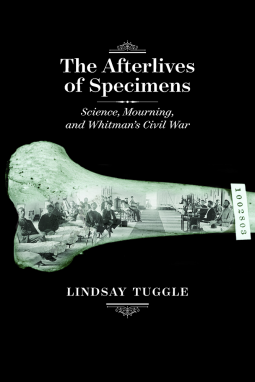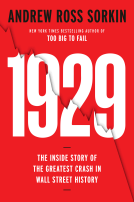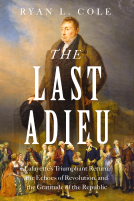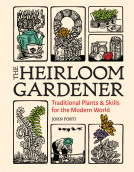Please wait... This may take a moment.
The Afterlives of Specimens
Science, Mourning, and Whitman's Civil War
This title was previously available on NetGalley and is now archived.
Pub Date
Nov 15 2017
| Archive Date
Jan 15 2018
Description
The Afterlives of Specimens explores the space between science and sentiment, the historical moment when the human cadaver became both lost love object and subject of anatomical violence. Walt Whitman witnessed rapid changes in relations between the living and the dead. In the space of a few decades, dissection evolved from a posthumous punishment inflicted on criminals to an element of preservationist technology worthy of the presidential corpse of Abraham Lincoln. Whitman transitioned from a fervent opponent of medical bodysnatching to a literary celebrity who left behind instructions for his own autopsy, including the removal of his brain for scientific study.
Grounded in archival discoveries, Afterlives traces the origins of nineteenth-century America’s preservation compulsion, illuminating the influences of botanical, medical, spiritualist, and sentimental discourses on Whitman’s work. Tuggle unveils previously unrecognized connections between Whitman and the leading “medical men” of his era, such as the surgeon John H. Brinton, founding curator of the Army Medical Museum, and Silas Weir Mitchell, the neurologist who discovered phantom limb syndrome. Remains from several amputee soldiers whom Whitman nursed in the Washington hospitals became specimens in the Army Medical Museum.
Tuggle is the first scholar to analyze Whitman’s role in medically memorializing the human cadaver and its abandoned parts.
The Afterlives of Specimens explores the space between science and sentiment, the historical moment when the human cadaver became both lost love object and subject of anatomical violence. Walt...
Description
The Afterlives of Specimens explores the space between science and sentiment, the historical moment when the human cadaver became both lost love object and subject of anatomical violence. Walt Whitman witnessed rapid changes in relations between the living and the dead. In the space of a few decades, dissection evolved from a posthumous punishment inflicted on criminals to an element of preservationist technology worthy of the presidential corpse of Abraham Lincoln. Whitman transitioned from a fervent opponent of medical bodysnatching to a literary celebrity who left behind instructions for his own autopsy, including the removal of his brain for scientific study.
Grounded in archival discoveries, Afterlives traces the origins of nineteenth-century America’s preservation compulsion, illuminating the influences of botanical, medical, spiritualist, and sentimental discourses on Whitman’s work. Tuggle unveils previously unrecognized connections between Whitman and the leading “medical men” of his era, such as the surgeon John H. Brinton, founding curator of the Army Medical Museum, and Silas Weir Mitchell, the neurologist who discovered phantom limb syndrome. Remains from several amputee soldiers whom Whitman nursed in the Washington hospitals became specimens in the Army Medical Museum.
Tuggle is the first scholar to analyze Whitman’s role in medically memorializing the human cadaver and its abandoned parts.
Advance Praise
“This is an exciting book. From the opening claim that Whitman’s word ‘specimen’ is etymologically grounded in voyeurism, Afterlives of Specimens is arresting in its insights. Well-researched and original, it makes a major contribution to Whitman studies while also contributing to Civil War history and to our understanding of the intersection of science and mourning.”—Kenneth Price, codirector, The Walt Whitman Archive
“This work will become quite important for Whitman scholars, but one of the reasons it is such an exciting volume is the contribution it makes to our overall understanding of attitudes toward and treatment of the body in the nineteenth century, particularly in the context of the Civil War. This work will appeal to a broad audience: certain anecdotes and pieces of information, while rather macabre (I challenge readers to forget the doctor who bound books in human skin), are so compelling that readers with a general interest in American history, the history of the Civil War, or in the history of medicine, will find it irresistible.”—Martin T. Buinicki, author, Walt Whitman’s Reconstruction
“This is an exciting book. From the opening claim that Whitman’s word ‘specimen’ is etymologically grounded in voyeurism, Afterlives of Specimens is arresting in its insights. Well-researched and...
Advance Praise
“This is an exciting book. From the opening claim that Whitman’s word ‘specimen’ is etymologically grounded in voyeurism, Afterlives of Specimens is arresting in its insights. Well-researched and original, it makes a major contribution to Whitman studies while also contributing to Civil War history and to our understanding of the intersection of science and mourning.”—Kenneth Price, codirector, The Walt Whitman Archive
“This work will become quite important for Whitman scholars, but one of the reasons it is such an exciting volume is the contribution it makes to our overall understanding of attitudes toward and treatment of the body in the nineteenth century, particularly in the context of the Civil War. This work will appeal to a broad audience: certain anecdotes and pieces of information, while rather macabre (I challenge readers to forget the doctor who bound books in human skin), are so compelling that readers with a general interest in American history, the history of the Civil War, or in the history of medicine, will find it irresistible.”—Martin T. Buinicki, author, Walt Whitman’s Reconstruction
Available Editions
| EDITION |
Paperback |
| ISBN |
9781609385392 |
| PRICE |
$65.00 (USD)
|
| PAGES |
276
|
Additional Information
Available Editions
| EDITION |
Paperback |
| ISBN |
9781609385392 |
| PRICE |
$65.00 (USD)
|
| PAGES |
276
|
Average rating from 6 members
Readers who liked this book also liked:
1929
Andrew Ross Sorkin
Business, Leadership, Finance, History











